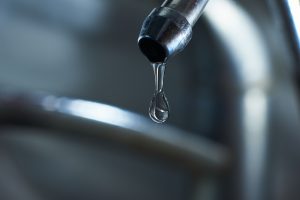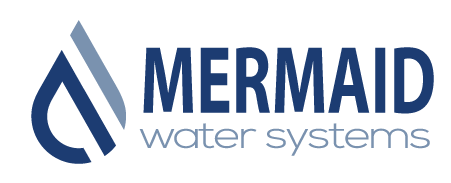From Tap to Pure: How Reverse Osmosis Revolutionizes Water Filtration
 With environmental concerns on the rise and a growing awareness about water quality, there is a greater demand for effective water filtration systems. Enter reverse osmosis – the ultimate solution that revolutionizes the way we filter water. In this article, we’ll explore how reverse osmosis technology works and why it’s becoming the preferred choice for many households.
With environmental concerns on the rise and a growing awareness about water quality, there is a greater demand for effective water filtration systems. Enter reverse osmosis – the ultimate solution that revolutionizes the way we filter water. In this article, we’ll explore how reverse osmosis technology works and why it’s becoming the preferred choice for many households.
How reverse osmosis works
Reverse osmosis employs a semi-permeable membrane to remove impurities and contaminants from water. By applying pressure, water molecules are forced through the membrane, leaving behind larger particles, such as minerals, chemicals, and even bacteria. The result? Clean, purified water, free from harmful substances.
This filtration process relies on the principle of osmosis, where water naturally moves from an area of low solute concentration to an area of high solute concentration. Reverse osmosis, as the name suggests, reverses this process by applying external pressure to force water through the membrane against its natural flow. The membrane only allows water molecules to pass through, trapping contaminants and impurities on one side.
The semi-permeable membrane used in reverse osmosis is made up of tiny pores, typically less than 0.001 microns in size. These pores are small enough to block the passage of most impurities, including dissolved salts, heavy metals, organic compounds, and microorganisms. The result is water that meets or even exceeds the standards set by regulatory bodies for drinking water quality.
One thing to note is that reverse osmosis also produces wastewater, known as brine or concentrate, as the rejected impurities are flushed away. However, modern reverse osmosis systems have become more efficient, reducing the ratio of wastewater to purified water significantly.
Benefits of reverse osmosis water filtration
What sets reverse osmosis apart is its thorough filtration process. Unlike traditional methods, it effectively eliminates up to 99% of impurities, delivering high-quality drinking water. This makes it an ideal solution for those concerned about the safety and taste of their tap water.
One of the primary benefits of reverse osmosis is its ability to remove contaminants that may be present in tap water. These contaminants can include chlorine, fluoride, lead, arsenic, nitrates, and many others. By removing these impurities, reverse osmosis ensures that the water is clean and safe for consumption.
Another advantage is the improved taste and odor of the water. Many people find that tap water can have a distinct chlorine taste or a metallic odor, which can be off-putting. Reverse osmosis eliminates these unwanted flavors and odors, resulting in water that is refreshing and pleasant to drink.
Furthermore, reverse osmosis is a cost-effective solution in the long run. While the initial investment may be higher compared to other filtration methods, the maintenance and replacement costs are relatively low. With regular maintenance, a reverse osmosis system can last for many years, providing consistent and reliable water filtration.
Reverse osmosis vs. other water filtration methods
When it comes to water filtration, there are various methods available, each with its own strengths and weaknesses. Let’s compare reverse osmosis with some of the commonly used alternatives to understand why it has gained popularity.
Activated Carbon Filtration: Activated carbon filters are commonly used in pitcher filters and faucet attachments. While they can remove some impurities and improve taste, they are not as effective as reverse osmosis in eliminating contaminants like heavy metals and dissolved solids. Additionally, activated carbon filters require frequent replacement, making them less cost-effective in the long run.
UV Sterilization: UV sterilization is effective at killing bacteria and viruses in water. However, it does not remove other impurities like dissolved salts and chemicals. Reverse osmosis, on the other hand, provides a comprehensive filtration process by removing both biological and chemical contaminants, ensuring the water is safe and clean.
Distillation: Distillation involves boiling water and collecting the condensation, leaving behind impurities. While distillation can remove many contaminants, it requires significant energy consumption and may not be suitable for large-scale residential use. Reverse osmosis provides a more efficient and practical solution for everyday water filtration needs.
Factors to consider when choosing a reverse osmosis system
If you’re considering investing in a reverse osmosis system, there are several factors to keep in mind to ensure you choose the right one for your needs.
Water Quality: It’s essential to understand the specific contaminants present in your water supply. Some areas may have higher levels of certain impurities, such as heavy metals or fluoride. Identifying these contaminants will help you select a reverse osmosis system with the appropriate filtration capabilities.
Water Pressure: Reverse osmosis systems require a certain level of water pressure to operate effectively. If your water pressure is low, you may need to consider installing a booster pump to ensure optimal filtration performance.
System Size: Reverse osmosis systems come in various sizes, ranging from under-sink units to whole-house systems. Consider the available space in your home and the amount of filtered water you require to determine the most suitable system size.
Certifications and Warranties: Look for reverse osmosis systems that are certified by reputable organizations, such as NSF International. These certifications ensure that the system meets specific quality and performance standards. Additionally, check the warranty terms to ensure you’re protected against any potential defects or malfunctions.
Installing and maintaining a reverse osmosis system
Installing a reverse osmosis system can be done as a DIY project or by hiring a professional plumber. The installation process typically involves connecting the system to your water supply and installing a separate faucet for the purified water. Follow the manufacturer’s instructions or consult a professional to ensure proper installation.
Regular maintenance is crucial to keep your reverse osmosis system running efficiently. This includes replacing filters as recommended by the manufacturer, checking for leaks or damage, and cleaning or sanitizing the system periodically. Most manufacturers provide detailed maintenance instructions, and many systems have indicators that alert you when it’s time to replace the filters.
By following the recommended maintenance schedule, you can prolong the lifespan of your reverse osmosis system and ensure it continues to deliver clean and pure water.
Common misconceptions about reverse osmosis water
Despite its many benefits, there are several misconceptions surrounding reverse osmosis water that need to be addressed.
Depletion of Essential Minerals: Some argue that reverse osmosis removes beneficial minerals from water, making it less healthy. While it’s true that reverse osmosis removes minerals, the contribution of minerals to our overall dietary intake is minimal. We obtain most of our essential minerals from a balanced diet, not from drinking water.
Acidity of Reverse Osmosis Water: Another misconception is that reverse osmosis water is acidic and can disrupt the body’s pH balance. However, reverse osmosis water typically has a neutral pH, around 7, which is considered optimal for human consumption. It is worth noting that the pH of tap water can also vary depending on the source.
Wastefulness of Reverse Osmosis: While it’s true that reverse osmosis produces wastewater, the amount has significantly decreased with advancements in technology. Modern systems are designed to be more efficient, reducing the ratio of wastewater to purified water. Additionally, the wastewater can be repurposed for various household uses, such as watering plants or cleaning.
Case studies: success stories of reverse osmosis water filtration
To understand the real-world impact of reverse osmosis water filtration, let’s explore a couple of case studies highlighting its success.
Case Study 1: Improved Health and Well-being
In a small town where the tap water had high levels of lead and other contaminants, a reverse osmosis system was installed in a local community center. The system successfully removed the harmful substances, providing clean drinking water for the residents. Over time, the community reported improved health and a decrease in water-related illnesses, demonstrating the positive impact of reverse osmosis filtration on overall well-being.
Case Study 2: Enhanced Taste and Quality
A family living in an area with poor water quality decided to invest in a reverse osmosis system for their home. The system removed the unpleasant taste and odor from the tap water, making it more enjoyable to drink. The family also noticed a significant improvement in the flavor of their cooked food and beverages, further highlighting the benefits of reverse osmosis in enhancing the overall quality of water.
These case studies showcase the transformative power of reverse osmosis in providing safe, clean, and great-tasting water for communities and households.
Top brands and models of reverse osmosis systems
When it comes to choosing a reverse osmosis system, there are several reputable brands and models to consider. Here are some top picks based on customer reviews and performance:
APEC Water Systems ROES-50: This under-sink reverse osmosis system is highly regarded for its effectiveness in removing impurities and its durable construction. It features a 5-stage filtration process and can produce up to 50 gallons of purified water per day.
iSpring RCC7AK: Known for its excellent filtration capabilities, the iSpring RCC7AK is a 6-stage reverse osmosis system that also adds minerals back into the water for improved taste. It comes with a sleek design and is easy to install and maintain.
Home Master TMAFC-ERP: The Home Master TMAFC-ERP stands out for its innovative design and efficient filtration process. It incorporates a non-electric permeate pump that reduces water waste and increases water production. The system also includes a remineralization stage to enhance the taste of the purified water.
These are just a few examples of the many quality reverse osmosis systems available on the market. Researching and comparing different brands and models will help you find the system that best suits your specific needs and preferences.
Conclusion: the future of reverse osmosis water filtration
Reverse osmosis has undoubtedly revolutionized water filtration, providing a reliable and efficient method to obtain clean and pure drinking water. Its ability to remove a wide range of contaminants, improve taste, and ensure high-quality water has made it the preferred choice for many households.
As technology continues to advance, we can expect further improvements in reverse osmosis systems, such as increased efficiency, reduced waste, and enhanced user-friendliness. These advancements will make reverse osmosis even more accessible and beneficial to a broader range of consumers.
With the growing importance of water quality and the increasing demand for sustainable solutions, reverse osmosis is poised to play a significant role in shaping the future of water filtration. By embracing this innovative technology, we can ensure that pure and healthy hydration is readily available to everyone.
